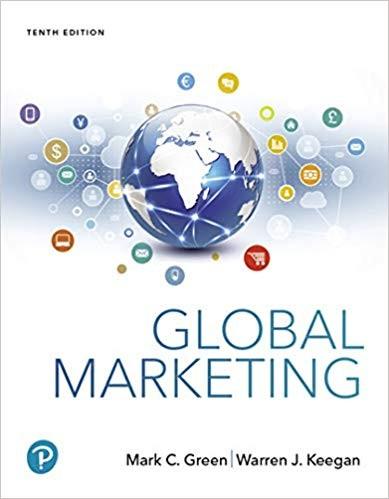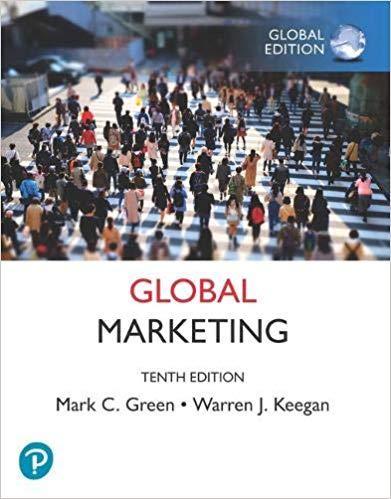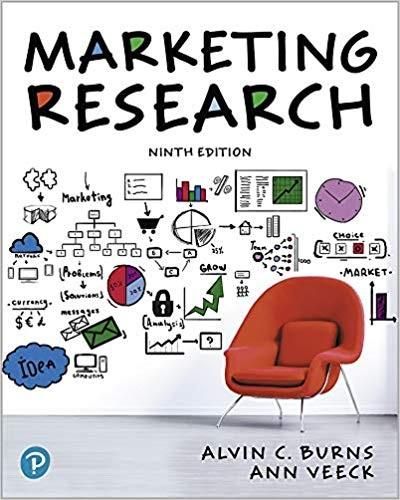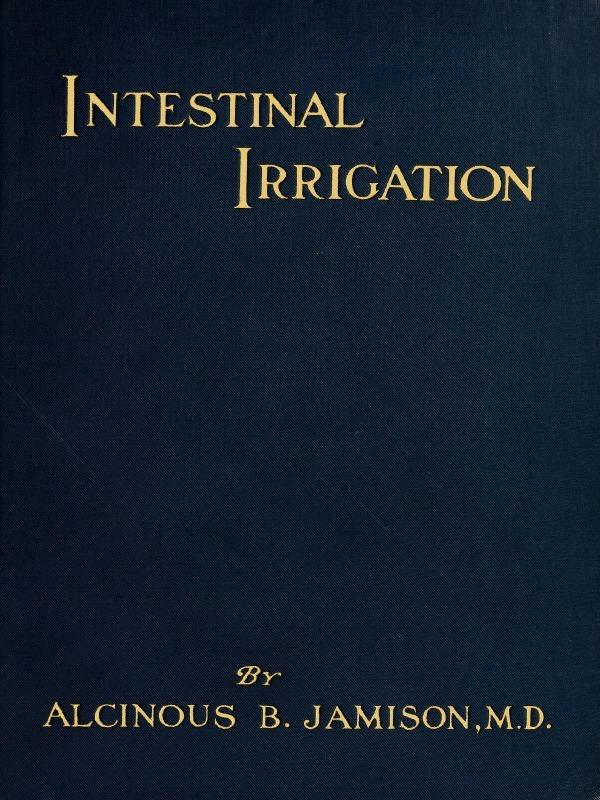(eBook PDF) Global Marketing 10th Edition by Mark C. Green download
https://ebooksecure.com/product/ebook-pdf-global-marketing-10thedition-by-mark-c-green/

We believe these products will be a great fit for you. Click the link to download now, or visit ebooksecure.com to discover even more!

(eBook PDF) Global Marketing, 10th Global Edition
http://ebooksecure.com/product/ebook-pdf-global-marketing-10thglobal-edition/

(eBook PDF) Global Politics by Mark A. Boyer
http://ebooksecure.com/product/ebook-pdf-global-politics-by-marka-boyer/

(eBook PDF) Classical Mythology 10th by Mark Morford
http://ebooksecure.com/product/ebook-pdf-classicalmythology-10th-by-mark-morford/

(eBook PDF) Marketing Research 8th Edition by Alvin C. Burns
http://ebooksecure.com/product/ebook-pdf-marketing-research-8thedition-by-alvin-c-burns/

(eBook PDF) Marketing Research 9th Edition by Alvin C. Burns
http://ebooksecure.com/product/ebook-pdf-marketing-research-9thedition-by-alvin-c-burns/

(eBook PDF) Tourism and Social Marketing by C. Michael Hall
http://ebooksecure.com/product/ebook-pdf-tourism-and-socialmarketing-by-c-michael-hall/

(eBook PDF) Microeconomics 10th Edition by David C Colander
http://ebooksecure.com/product/ebook-pdf-microeconomics-10thedition-by-david-c-colander/

(eBook PDF) Global Marketing 8th Edition by Svend Hollensen
http://ebooksecure.com/product/ebook-pdf-global-marketing-8thedition-by-svend-hollensen/

(eBook PDF) Global Marketing 7th Edition by Svend Hollensen
http://ebooksecure.com/product/ebook-pdf-global-marketing-7thedition-by-svend-hollensen/

Preface xvi
Acknowledgments xx
PART ONE INTRODUCTION 2
Chapter 1 Introduction to Global Marketing 2
Case 1-1
The Global Marketplace Is Also Local 2
1-1 Introduction and Overview 3
1-2 Principles of Marketing: A Review 5
Competitive Advantage, Globalization, and Global Industries 6
1-3 Global Marketing: What it is and What it isn’t 9
1-4 The Importance of Global Marketing 16
1-5 Management Orientations 17
Ethnocentric Orientation 17
Polycentric Orientation 18
Regiocentric Orientation 18
Geocentric Orientation 18
1-6 Forces Affecting Global Integration and Global Marketing 21
Driving Forces 21
MULTILATERAL TRADE AGREEMENTS 21
CONVERGING MARKET NEEDS AND WANTS AND THE INFORMATION REVOLUTION 21
TRANSPORTATION AND COMMUNICATION IMPROVEMENTS 22
PRODUCT DEVELOPMENT COSTS 22
QUALITY 23
WORLD ECONOMIC TRENDS 23
LEVERAGE 24
Experience Transfers 24
Scale Economies 24
RESOURCE UTILIZATION 25
GLOBAL STRATEGY 25
INNOVATION AND ENTREPRENEURSHIP 25
Restraining Forces 26
MANAGEMENT MYOPIA AND ORGANIZATIONAL CULTURE 26
NATIONAL CONTROLS 26
OPPOSITION TO GLOBALIZATION 26
1-7 Outline of This Book 27
Summary 28
Discussion Questions 29
Case 1-1 The Global Marketplace (continued) 30
Case 1-2 McDonald’s Expands Globally While Adjusting Its Local Recipe 31
Case 1-3 Apple versus Samsung: The Battle for Smartphone
Supremacy Heats Up 35
PART TWO THE GLOBAL MARKETING ENVIRONMENT 40
Chapter 2 The Global Economic Environment 40
Case 2-1 India’s Economy at the Crossroads: Can Prime Minister Narendra Modi Deliver Acche Din? 40
2-1 The World Economy—Overview of Major Changes 41
2-2 Economic Systems 43
Market Capitalism 44
Centrally Planned Socialism 44
Centrally Planned Capitalism and Market Socialism 45
2-3 Stages of Market Development 48
Low-Income Countries 49
Lower-Middle-Income Countries 50
Upper-Middle-Income Countries 51
Marketing Opportunities in LDCs and Developing Countries 54
High-Income Countries 57
Marketing Implications of the Stages of Development 58
2-4 Balance of Payments 59
2-5 Trade in Merchandise and Services 61
Overview of International Finance 62
Economic Exposure 64
Managing Exchange Rate Exposure 64
Summary 65
Discussion Questions 66
Case 2-1 India’s Economy at the Crossroads: Can Prime Minister Narendra Modi Deliver Acche Din? (continued) 67
Case 2-2 A Day in the Life of a Contracts Analyst at Cargill 69
Chapter 3 The Global Trade Environment 72
Case 3-1 Breaking Up Is Hard to Do: Britons Contemplate “Brexit” 72
3-1 The World Trade Organization and Gatt 73
3-2 Preferential Trade Agreements 74
Free Trade Area 75
Customs Union 76
Common Market 76
Economic Union 76
3-3 North America 77
3-4 Latin America: Sica, Andean Community, Mercosur, and Caricom 80
Central American Integration System 80 Andean Community 82
Common Market of the South (Mercosur) 84
Caribbean Community and Common Market (CARICOM) 85
3-5 Asia-Pacific: The Association of Southeast Asian Nations 87
Marketing Issues in the Asia-Pacific Region 88
3-6 Western, Central, and Eastern Europe 89
The European Union 89
Marketing Issues in the EU 93
Central and Eastern Europe 94
3-7 The Middle East 94
Cooperation Council for the Arab States of the Gulf 95
Marketing Issues in the Middle East 96
3-8 Africa 97
Economic Community of West African States 97
East African Community 97
Southern African Development Community 98
Marketing Issues in Africa 98
Summary 99
Discussion Questions 99
Case 3-1 Breaking Up Is Hard to Do: Britons Contemplate “Brexit” (continued) 101
Case 3-2 Can Global Trade Talks Survive in an Era of Populism and Protectionism? 103
Chapter 4 Social and Cultural Environments 106
Case 4-1 Strange Brew: Coffee Culture Around the World 106
4-1 Society, Culture, and Global Consumer Culture 107
Attitudes, Beliefs, and Values 108
Religion 109
Aesthetics 110
Dietary Preferences 111
Language and Communication 112
Marketing’s Impact on Culture 117
4-2 High- and Low-Context Cultures 118
4-3 Hofstede’s Cultural Typology 119
4-4 The Self-Reference Criterion and Perception 121
4-5 Diffusion Theory 124
The Adoption Process 124
Characteristics of Innovations 124
Adopter Categories 125
Diffusion of Innovations in Pacific Rim Countries 126
4-6 Marketing Implications of Social and Cultural Environments 126
Summary 128
Discussion Questions 129
Case 4-1 Coffee Culture Around the World (continued) 129
Case 4-2 Is Tourism the Savior or the Scourge of Venice? 133
Chapter 5 The Political, Legal, and Regulatory Environments 138
Case 5-1 Travis Kalanick and Uber 138
5-1 The Political Environment 139
Nation-States and Sovereignty 140
Political Risk 142
Taxes 143
Seizure of Assets 145
5-2 International Law 145
Common Law versus Civil Law 147
Islamic Law 148
5-3 Sidestepping Legal Problems: Important Business Issues 148
Jurisdiction 149
Intellectual Property: Patents, Trademarks, and Copyrights 149 Antitrust 155
Licensing and Trade Secrets 159
Bribery and Corruption: Legal and Ethical Issues 160
5-4 Conflict Resolution, Dispute Settlement, and Litigation 162
Alternatives to Litigation for Dispute Settlement 163
5-5 The Regulatory Environment 164
Regional Economic Organizations: The EU Example 165
Summary 167
Discussion Questions 167
Case 5-1 Travis Kalanick and Uber (continued) 168
Case 5-2 Putin’s Russia versus the West: Cold War 2.0? 170
PART THREE APPROACHING GLOBAL MARKETS 174
Chapter 6 Global Information Systems and Market Research 174
Case 6-1
Big Data: “Number One with a Bullet” in the Music Industry 174
6-1 Information Technology, Management Information Systems, and Big Data for Global Marketing 176
6-2 Sources of Market Information 181
6-3 Formal Market Research 183
Step 1: Information Requirements 183
Step 2: Problem Definition 184
Step 3: Choosing the Unit of Analysis 185
Step 4: Examining Data Availability 185
Step 5: Assessing the Value of Research 187
Step 6: Research Design 187
ISSUES IN DATA COLLECTION 188
RESEARCH METHODOLOGIES 189
SCALE DEVELOPMENT 194
SAMPLING 194
Step 7: Data Analysis 194
COMPARATIVE ANALYSIS AND MARKET ESTIMATION BY ANALOGY 198
Step 8: Interpretation and Presentation 199
6-4 Headquarters’ Control of Market Research 200
6-5 The Marketing Information System as a Strategic Asset 201 Summary 202
Discussion Questions 202
Case 6-1 Big Data Transforms the Music Business and Artist Careers (continued) 203
Case 6-2 A Day in the Life of a Business Systems and Analytics Manager 207
Chapter 7 Segmentation, Targeting, and Positioning 212
Case 7-1 Segmenting the Chinese Luxury Goods Market 212
7-1 Global Market Segmentation 213
Contrasting Views of Global Segmentation 214
Demographic Segmentation 215
SEGMENTING GLOBAL MARKETS BY INCOME AND POPULATION 216
AGE SEGMENTATION 220
GENDER SEGMENTATION 221
Psychographic Segmentation 221
Behavior Segmentation 224
Benefit Segmentation 224
Ethnic Segmentation 225
7-2 Assessing Market Potential and Choosing Target Markets or Segments 226
Current Segment Size and Growth Potential 226
Potential Competition 228
Feasibility and Compatibility 229
A Framework for Selecting Target Markets 230
7-3 Product–Market Decisions 231
7-4 Targeting and Target Market Strategy Options 233
Standardized Global Marketing 233
Concentrated Global Marketing 234
Differentiated Global Marketing 235
7-5 Positioning 236
Attribute or Benefit 236
Quality and Price 236
Use or User 237
Competition 237
Global, Foreign, and Local Consumer Culture Positioning 237
Summary 240
Discussion Questions 240
Case 7-1
Segmenting the Chinese Luxury Goods Market (continued) 241
Case 7-2 Cosmetics Giants Segment the Global Health and Beauty Market 243
Chapter 8 Importing, Exporting, and Sourcing 246
Case 8-1 The Game’s Afoot: Exports Revive Britain’s Shoe Industry 246
8-1 Export Selling and Export Marketing: A Comparison 247
8-2 Organizational Export Activities 249
8-3 National Policies Governing Exports and Imports 250
Government Programs That Support Exports 250
Governmental Actions to Discourage Imports and Block Market Access 252
8-4 Tariff Systems 257
Customs Duties 259
Other Duties and Import Charges 259
8-5 Key Export Participants 260
8-6 Organizing for Exporting in the Manufacturer’s Country 261
8-7 Organizing for Exporting in the Market Country 262
8-8 Trade Financing and Methods of Payment 262
Letters of Credit 263
Documentary Collections (Sight or Time Drafts) 264
Navigating the Real World: A Brief Case Study 264
Navigating the Real World: Another Brief Case Study 265
Additional Export and Import Issues 265
8-9 Sourcing 266
Management Vision 267
Factor Costs and Conditions 268
Customer Needs 269
Logistics 269
Country Infrastructure 269
Political Factors 270
Foreign Exchange Rates 270
Summary 270
Discussion Questions 271
Case 8-1 Great Britain’s Shoe Export Boom (continued) 271
Case 8-2 A Day in the Life of an Export Coordinator 273
Chapter 9 Global Market-Entry Strategies: Licensing, Investment, and Strategic Alliances 276
Case 9-1 AB InBev and SABMiller: A Match Made in (Beer) Heaven? 276
9-1 Licensing 278
Special Licensing Arrangements 280
9-2 Investment 281
Joint Ventures 283
Investment via Equity Stake or Full Ownership 284
9-3 Global Strategic Partnerships 288
The Nature of Global Strategic Partnerships 288
Success Factors 291
Alliances with Asian Competitors 291
CFM International, GE, and Snecma: A Success Story 292
Boeing and Japan: A Controversy 292
9-4 International Partnerships in Developing Countries 293
9-5 Cooperative Strategies in Asia 294
Cooperative Strategies in Japan: Keiretsu 294
Case 9-1
Cooperative Strategies in South Korea: Chaebol 296
9-6 Twenty-First-Century Cooperative Strategies 297
9-7 Market Expansion Strategies 298
Summary 298
Discussion Questions 299
AB InBev and SABMiller: A Match Made in (Beer) Heaven? (continued) 300
Case 9-2 Jaguar’s Passage to India 302
PART FOUR THE GLOBAL MARKETING MIX 306
Chapter 10 Brand and Product Decisions in Global Marketing 306
Case 10-1
Alphabet 306
10-1
Basic Product Concepts 307
Product Types 308
Product Warranties 308
Packaging 308
Labeling 309
Aesthetics 310
10-2 Basic Branding Concepts 310
Local Products and Brands 311
International Products and Brands 312
Global Products and Brands 312
Global Brand Development 315
10-3 A Needs-Based Approach To Product Planning 319
10-4 “Country of Origin” as a Brand Element 322
10-5 Extend, Adapt, Create: Strategic Alternatives in Global Marketing 324
Strategy 1: Product-Communication Extension (Dual Extension) 325
Strategy 2: Product Extension–Communication Adaptation 326
Strategy 3: Product Adaptation–Communication Extension 327
Strategy 4: Product-Communication Adaptation (Dual Adaptation) 328
Strategy 5: Innovation 329
How to Choose a Strategy 329
10-6 New Products in Global Marketing 330
Identifying New-Product Ideas 330 New-Product Development 331
The International New-Product Department 333
Testing New Products 333
Summary 334
Discussion Questions 335
Case 10-1 Google (continued) 335
Chapter 11 Pricing Decisions 340
Case 11-1 Global Automakers Target Low-Income Consumers 340
11-1 Basic Pricing Concepts 341
11-2 Global Pricing Objectives and Strategies 342
Market Skimming and Financial Objectives 342
Penetration Pricing and Nonfinancial Objectives 344
Companion Products: Captive (“Razors and Blades”) Pricing 344
Target Costing 345
Calculating Prices: Cost-Plus Pricing and Export Price Escalation 346
11-3 Incoterms 347
11-4 Environmental Influences on Pricing Decisions 351
Currency Fluctuations 351
Inflationary Environment 354
Government Controls, Subsidies, and Regulations 355
Competitive Behavior 356
Using Sourcing as a Strategic Pricing Tool 357
11-5 Global Pricing: Three Policy Alternatives 357
Extension or Ethnocentric Pricing 357
Adaptation or Polycentric Pricing 358
Geocentric Pricing 358
11-6 Gray Market Goods 359
11-7 Dumping 360
11-8 Price Fixing 361
11-9 Transfer Pricing 362
Tax Regulations and Transfer Prices 362
Sales of Tangible and Intangible Property 363
11-10 Countertrade 364
Barter 364
Counterpurchase 365
Offset 365
Compensation Trading 365
Switch Trading 366
Summary 366
Discussion Questions 367
Case 11-1 Global Automakers Target Low-Income Consumers (continued) 367
Case 11-2 Global Consumer-Products Companies Target Low-Income Consumers 369
Case 11-3 LVMH and Luxury Goods Marketing 371
Chapter 12 Global Marketing Channels and Physical Distribution 376
Case 12-1 Welcome to the World of Fast Fashion 376
12-1 Distribution Channels: Objectives, Terminology, and Structure 377
Consumer Products and Services 378
Industrial Products 382
12-2 Establishing Channels and Working With Channel Intermediaries 383
12-3 Global Retailing 386
Types of Retail Operations 387
Trends in Global Retailing 391
Global Retailing Market Expansion Strategies 394
12-4 Physical Distribution, Supply Chains, and Logistics Management 397
Order Processing 399
Warehousing 400
Inventory Management 400
Transportation 400
Logistics Management: A Brief Case Study 403
Summary 403
Discussion Questions 404
Case 12-1 Welcome to the World of Fast Fashion (continued) 405
Case 12-2 Can Walmart Crack the Retail Code in India? 408
Chapter 13 Global Marketing Communications Decisions I 412
Case 13-1 Volkswagen’s “Dieselgate” Nightmare 412
13-1 Global Advertising 413
Global Advertising Content: Standardization versus Adaptation 415
13-2 Advertising Agencies: Organizations and Brands 419
Selecting an Advertising Agency in the Era of Digital Disruption 420
13-3 Creating Global Advertising 424
Art Direction and Art Directors 425 Copy and Copywriters 426
Additional Cultural Considerations 426
13-4 Global Media Decisions 429
Global Advertising Expenditures and Media Vehicles 430 Media Decisions 430
13-5 Public Relations and Publicity 431
The Growing Role of PR in Global Marketing Communications 435 How PR Practices Differ Around the World 436
Summary 437
Discussion Questions 437
Case 13-1 Volkswagen’s “Dieselgate” Nightmare (continued) 438
Case 13-2 Coca-Cola: Using Advertising and Public Relations to Respond to a Changing World 440
Chapter 14 Global Marketing Communications Decisions II 444
Case 14-1 Milan Expo 2015 444
14-1 Sales Promotion 446
Sampling 448
Couponing 449
Sales Promotion: Issues and Problems 450
14-2 Personal Selling 451
The Strategic/Consultative Selling Model 453
14-3 Sales Force Nationality 457
14-4 Special Forms of Marketing Communications: Direct Marketing 460
Direct Mail 461
Catalogs 461
Infomercials, Teleshopping, and Interactive Television 463
14-5 Special Forms of Marketing Communications: Support Media, Sponsorship, and Product Placement 464
Support Media 464
Sponsorship 466
Product Placement: Motion Pictures, Television Shows, and Public Figures 468
Summary 470
Discussion Questions 471
Case 14-1 Milan Expo 2015 (continued) 472
Case 14-2 Red Bull 474
Chapter 15 Global Marketing and the Digital Revolution 478
Case 15-1 How Do You Like Your Reality? Virtual? Augmented? Mixed? 478
15-1 The Digital Revolution: A Brief History 479
15-2 Convergence 483
15-3 Value Networks and Disruptive Technologies 484
15-4 Global E-Commerce 487
15-5 Web Site Design and Implementation 490
15-6 New Products and Services 492
Broadband 492
Cloud Computing 494
Smartphones 494
Mobile Advertising and Mobile Commerce 494
Autonomous Mobility 497
Mobile Music 498
Mobile Gaming 498
Online Gaming and e-Sports 499
Mobile Payments 499
Streaming Video 500
Internet Phone Service 500
Digital Books and Electronic Reading Devices 500
Wearables 501
Summary 502
Discussion Questions 503
Case 15-1 How Do You Like Your Reality: Virtual? Augmented? Mixed? (continued) 504
Case 15-2 Africa 3.0 506
PART FIVE STRATEGY AND LEADERSHIP IN THE TWENTY-FIRST CENTURY 510
Chapter 16 Strategic Elements of Competitive Advantage 510
Case 16-1 IKEA 510
16-1 Industry Analysis: Forces Influencing Competition 511
Threat of New Entrants 512
Threat of Substitute Products 513
Bargaining Power of Buyers 513
Bargaining Power of Suppliers 514
Rivalry among Competitors 514
16-2 Competitive Advantage 515
Generic Strategies for Creating Competitive Advantage 515
BROAD MARKET STRATEGIES: COST LEADERSHIP AND DIFFERENTIATION 515
NARROW TARGET STRATEGIES: COST FOCUS AND FOCUSED DIFFERENTIATION 517
Creating Competitive Advantage via Strategic Intent 519
LAYERS OF ADVANTAGE 519
LOOSE BRICKS 520
CHANGING THE RULES 520
COLLABORATING 521
16-3 Global Competition and National Competitive Advantage 521
Factor Conditions 522
HUMAN RESOURCES 522
PHYSICAL RESOURCES 522
KNOWLEDGE RESOURCES 522
CAPITAL RESOURCES 523
INFRASTRUCTURE RESOURCES 523
Demand Conditions 523
COMPOSITION OF HOME DEMAND 525
SIZE AND PATTERN OF GROWTH OF HOME DEMAND 525
RAPID HOME-MARKET GROWTH 525
MEANS BY WHICH A NATION’S PRODUCTS AND SERVICES ARE PUSHED OR PULLED INTO FOREIGN COUNTRIES 525
Related and Supporting Industries 525
Firm Strategy, Structure, and Rivalry 526
Chance 526
Government 527
16-4 Current Issues in Competitive Advantage 527
Hypercompetitive Industries 527
COST AND QUALITY 529
TIMING AND KNOW-HOW 529
ENTRY BARRIERS 531
The Flagship Firm: The Business Network with Five Partners 532
Blue Ocean Strategy 533
Additional Research on Competitive Advantage 534
Summary 535
Discussion Questions 535
Case 16-1 IKEA (continued) 536
Case 16-2 “Everything Is Awesome, Everything Is Cool” at LEGO 538
Chapter 17 Leadership, Organization, and Corporate Social Responsibility 542
Case 17-1 A Changing of the Guard at Unilever 542
17-1 Leadership 543
Top Management Nationality 544
Leadership and Core Competence 546
17-2 Organizing For Global Marketing 547
Patterns of International Organizational Development 550
INTERNATIONAL DIVISION STRUCTURE 550
REGIONAL MANAGEMENT CENTERS 552
GEOGRAPHIC AND PRODUCT DIVISION STRUCTURES 554
THE MATRIX DESIGN 555
17-3 Lean Production: Organizing The Japanese Way 558
Assembler Value Chains 558
Downstream Value Chains 559
17-4 Ethics, Corporate Social Responsibility, and Social Responsiveness in the Globalization Era 560
Summary 566
Discussion Questions 567
Case 17-1 Unilever (continued) 567
Glossary 573
Author/Name Index 587
Subject/Organization Index 597








